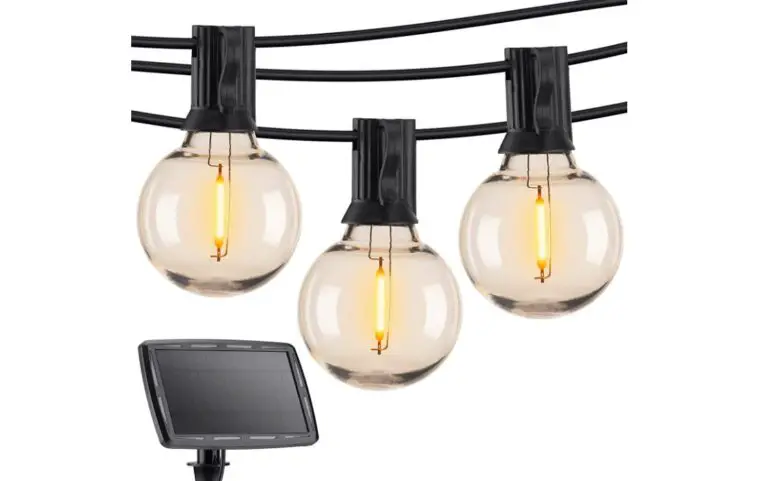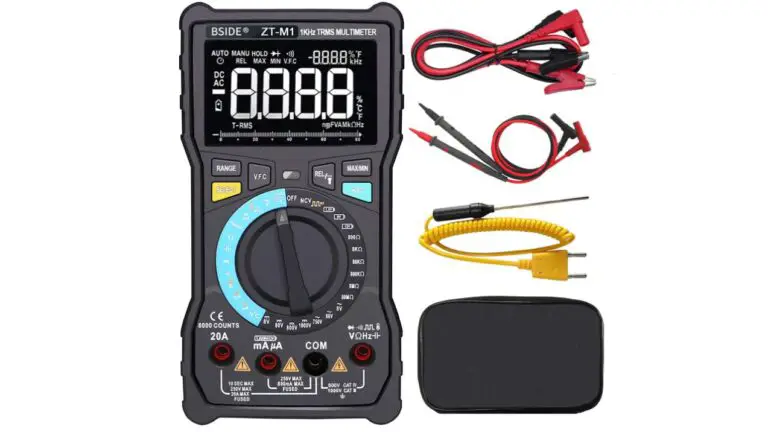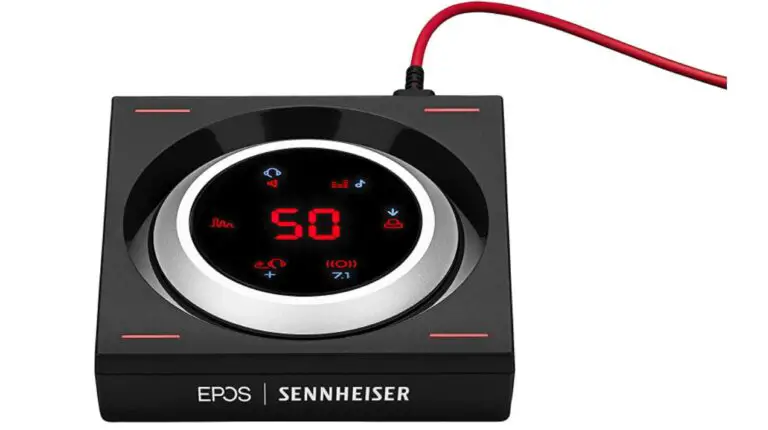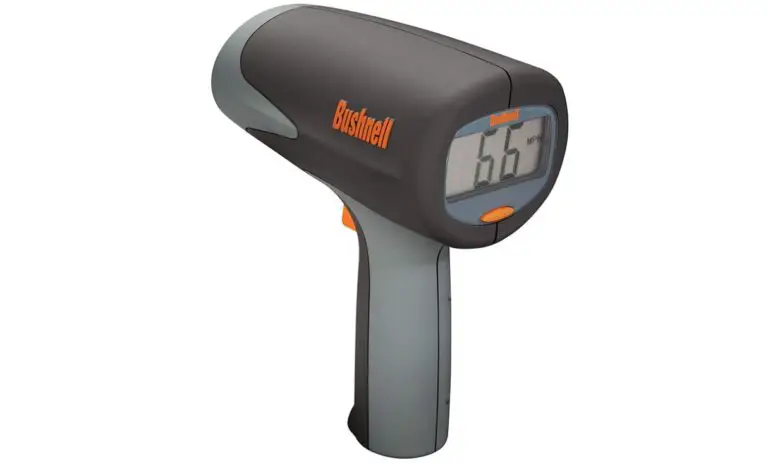Best Motion Sensor Light Switch Reviews
A motion sensor light switch differs from a standard light switch in terms of both design and functioning, but the most significant difference is the use of a motion sensor to detect movement and automatically turn on the light in a designated area. This method has been around for over a decade and has proven to be highly beneficial in a variety of situations. I’m sure you’ve seen a motion sensor light in a public restroom or a hotel, but as these devices have become more reliable (and more affordable), they’ve become increasingly common in houses.
How many times have you walked into a room with a bag full of belongings and found yourself unable to turn on the lights? (or) did you find it difficult to turn on the lights at night? It’s now time to replace and install motion sensor light switches throughout your home.
As soon as someone enters the room, motion sensor light switches detect their presence based on their movement or body heat and turn on/off the light automatically. They are simple to set up and save electricity, as well as money.
There are many different types of sensor light switches on the market, each with its own technology, design, and functions, but you must choose the right one for your needs.
Best Motion Sensor Light Switch of 2022


Lutron Maestro Motion Sensor Light Switch


TOPGREENER TSOS5


ELEGRP Occupancy Motion Sensor Light Switch


Legrand radiant Motion Sensor Light Switch


Enerlites MWOS-W Motion Sensor Light Switch


Lutron is a well-known manufacturer of electrical products including switches and lights. Lutron, in particular, creates smart home gadgets such as the motion sensor light switch.
We have the Lutron Maestro Motion Sensor Switch in the first place for you. It’s a wall-mounted light switch that turns on and off automatically as you walk in and out of the room.
It is also capable of detecting additional activities such as typing, reading, and so on, thanks to the XCT sensor technology, for improved performance. There is also a built-in daylight sensor that prevents the gadget from turning on the light when the room is sufficiently lit by natural light.
For the Lutron Maestro Motion Sensor Switch, you can set the timeout choices to 1, 5, 15, or 30 minutes. It can be used with practically any type of bulb or light source, including heavy light bulbs with a power capability of up to 250 watts. Because the Lutron Maestro Motion Sensor Switch does not require a neutral wire, the whole installation time might be as little as 15 minutes. Lutron will also provide you with a two-year warranty.


TOPGREENER is another well-known company that offers a variety of alternatives for energy conservation and smart home applications. TOPGREENER’s motion sensor light switch is a fantastic alternative.
The TOPGREENER TSOS5 is our third choice for the best motion sensor light switches currently available. It also has enhanced compatibility, similar to other premium choices on the market, in that it can detect room vacancy and occupancy and provide varied outcomes based on that information. You can also change the settings to manual mode and control the switch as if it were a standard light switch.
The TOPGREENER TSOS5 has a maximum coverage area of 707 square feet and a 180-degree field of vision where it can detect the presence. You may also change the sensitivity from 30% to 100% depending on the size of the room and your needs. You can also change the duration of the timeout from 15 seconds to 30 minutes. All of TOPGREENER’s motion sensor light switches come with a one-year warranty.


Our next option is from ELEGRP, yet another well-known brand. This company also creates motion-activated light switches that don’t require a neutral wire.
The ELEGRP Occupancy Sensor Light Switch is our second choice for the finest motion sensor light switch. It’s also a cost-effective and simple-to-install choice because it doesn’t require a neutral wire. To install this light switch, you will need a grounding wire.
It has an ultra-slim design that allows the switch to be installed in the wall. This is a universally compatible switch that works with LEDs up to 300 watts and incandescent bulbs up to 600 watts.
The ELEGRP Occupancy Sensor Light Switch has a matte finish surface and a frameless design, making it particularly appealing in terms of appearance. The switch is still protected by a protective thermoplastic casing that protects it from knocks and scratches.
Multiple control choices are available with the ELEGRP Occupancy Sensor Light Switch. The switch can be used as a single-pole switch or for two places at once. ELEGRP also offers a two-year warranty on its products.


Now that you’ve seen the budget-friendly options for motion sensor light switches, let’s look at the higher-end options, of which Legrand is a great value.
When someone enters or quits the room, the Legrand radiant Motion Sensor Light Switch automatically switches on and off the connected light sources. Because of the high-quality motion sensor included with this light switch, this is achievable.
A dedicated LED indicator is also incorporated on the switch, which provides a visual indication of the switch’s location in the room, even in the dark. It also has a lot of adjustment choices for time-out functions, which range from 30 seconds to 30 minutes.
The Legrand radiant Motion Sensor Light Switch has three operation modes: automatic, manual, and selectable auto/manual settings.
This switch has removable face plates, so you can always purchase a good faceplate for your switch and match it to your room’s current design. Legrand’s motion sensor light switches come with a limited lifetime guarantee, making it the most dependable option on our list.


Enerlites is a high-end company with a wide range of premium accessories and sensors to meet your every demand. Enerlites sells a variety of accessories for motion sensor light switches in addition to the switch itself.
The Enerlites MWOS-W Motion Sensor Switch is at the bottom of our list of the best motion sensor light switch. It’s the most expensive option for a motion sensor light switch, and for good reason: it combines two motion sensing technologies.
This gadget has both a PIR and an ultrasonic sensor, giving it a performance that is unsurpassed by other solutions. As a result, the Enerlites MWOS-W Motion Sensor Switch will not produce any false positive findings.
You can modify the detection range, light intensity, and mode of operation for the Enerlites MWOS-W Motion Sensor Switch in addition to the delay choices. The occupancy and vacancy modes of operation are present, and they differ in terms of trigger types and detection levels. Enerlites provides a 5-year warranty on this light switch because it is a high-end product.
What Is a Motion Sensor Light Switch
A motion sensor light switch detects movement, mostly humans and their activities, and turns the light on and off as needed. When the motion sensor detects humans in the room, the light will turn on and stay on for as long as they are present. The motion sensor switch will turn off the light automatically when people leave the room to save electricity.
You may quickly convert your existing ordinary light into an indoor motion sensor light by using a sensor light switch. It’s similar to turning a regular light into a motion-activated light by adding a motion sensor.
Motion Sensor Light Switch Buying Guide
Motion sensor light switches not only save you the effort of manually controlling switches (turning on/off the lights), but they also save you money by turning off the lights when no one is in the room. The light switches listed above are the best and most efficient. We’ve put together a buying guide to help you make the best decision. It covers a variety of topics and makes the process easier.
Let’s go into the specifics of what to look for when purchasing a motion sensor light switch.
Motion Sensor Light Switch Mode
What are motion sensor light switches and how do they work?
In most motion sensor light switches, there are two operating modes to choose from occupancy mode and vacancy mode. Because it influences how the sensor reacts or controls the illumination when motion is detected, the working mode is also known as the operating mode, sensor mode, or motion detection mode. Many manufacturers refer to occupancy and vacancy mode as occupancy or vacancy sensor for the same reason.
Some motion sensor light switches have the ability to flip between occupancy and vacancy modes, while others are either occupancy or vacancy sensor. These adjustable-mode sensor light switches are commonly referred to as an occupancy/vacancy sensor, OCC/VAC sensor, all-in-one sensor, or simply an occupancy sensor.
The advantage of an occupancy/vacancy sensor is that it is simple to change the sensor mode to suit other applications without having to replace the switch, making it perfect for residential use. An occupancy or vacancy sensor is frequently sufficient for the purpose in settings with a regular daily routine, such as offices in commercial buildings.
Occupancy Mode
When the motion sensor detects humans in the area, the motion sensor switch automatically turns on the light, keeps the light on as long as people are still in the room, and turns off the light when the motion sensor cannot find any people.
Auto-ON, Auto-OFF, OCC mode, and an occupancy sensor are all terms used to describe the occupancy mode.
Vacancy Mode
People must manually turn the light on in vacant mode by clicking the ON/OFF button on the switch. When people are still in the room, the motion sensor switch will keep the light on, and when the room is empty and no motion can be detected, it will automatically turn off the light.
Manual-ON, Auto-OFF, VAC mode, or a vacancy sensor are all terms used to describe the vacancy mode.
Type of Motion Detection Sensors (Active Vs. Passive):
These motion sensor light switches, as the name implies, detect motion or the presence of someone in the room using either active or passive sensors. The total performance of the device is determined by the type of sensor you select. As a result, you must check the type of sensor installed on a switch to determine whether it applies to you or not.
Active Sensors
Using ultrasonic technology, the sound waves sent by the sensor will bounce off things in the room and return to the switch. If there is a difference in the pattern or speed of the returning sound waves (sent wave vs. received wave), the sensor activates the switch to turn on the light due to someone’s presence in the room (motion). If the sensor detects no changes in the pattern after a certain amount of time, the switch automatically turns off the light (scheduled or set light turn-off time). Because of its light sensitivity and ability to detect tiny motions, this is an excellent choice for commercial buildings and open spaces (even around corners or obstacles)
Passive Sensors
With the help of a passive infrared sensor (PIR), this sensor turns on the light whenever it detects the heat (body heat) of humans or animals in the room. When the sensor does not detect body heat for a certain amount of time, the light turns off. Typically, the sensor detects sunshine (heat) in the room and activates the light. To avoid inadvertent triggering, choose a model with a sensor sensitivity that ignores gradual heat changes in the room. Due to their low power consumption, affordability, and ability to respond to human motions, these PIR motion sensor light switches are perfect for usage in both commercial and residential settings.
Time Delay
After the room is empty and no one is there, the time delay, also known as timeout or timer, keeps the light on for an additional period. A 15-minute time delay, for example, will keep the light on for another 15 minutes after everyone has left the room. The light will stay on if somebody returns or if motion is detected in the room, and the countdown timer will reset. The light is now switched off by the switch if the motion sensor does not detect any motion after the 15-minute time delay. Different models frequently offer delay time options of 30 seconds, 5 minutes, 15 minutes, and 30 minutes.
The time delay is quite important and necessary for maintaining consistent lighting and illumination for a pleasant user experience. Due to factors such as vast distances and tiny motions, motion sensors are unable to detect all of the motion in the room at all times.
Without a timer, the light will be turned off as soon as the motion detection “thinks” the room is empty, causing significant inconvenience to the users still there.
A modest time delay can assist save energy and reduce electricity waste, whilst a long time delay helps keep the light consistent and prevent it from shutting off accidentally. It’s critical to choose the optimal time delay for your use case while balancing energy efficiency and user experience.
Ambient Light
With the use of a built-in photocell sensor, the ambient light detection or daylight detecting feature allows the motion sensor switch to detect ambient light level, allowing the motion-activated switch to only turn on the light when the environment is dark. Even if the motion sensor detects motion, the light will not switch on if the ambient light is bright and there is enough natural light in the room. The daylight sensor feature can help customers conserve even more energy by allowing them to enjoy enough natural light during the day while avoiding the usage of unnecessary artificial light.
Users can generally choose from a range of pre-set ambient light levels ranging from high to low (sometimes written in LUX values such as 35 LUX, which roughly translates to ambient brightness or light intensity), with the motion sensor switch turning on the light only when the ambient light value in the room falls below the pre-set light sensor value.
If you disable ambient light detection, the motion sensor switch will operate normally, turning on the light whenever it detects movement. Many manufacturers also include a smart ambient light feature that allows the light sensor to learn your ideal light level over time, which is more precise and customizable than pre-set levels.
Sensor Sensitivity
The sensitivity option allows users to adjust the motion sensor’s sensitivity to detect movement. A high sensitivity setting allows the motion sensor to detect motion from a greater distance, which is why in some models the sensitivity is also referred to as “range” or “detection range.”
A motion sensor’s capacity to detect small and fine motions like typing on a desk, watching TV, or reading a book is typically less than that of detecting major movements like walking or waving. The sensor light switch can respond more accurately to minor motions with a high sensitivity level.
The majority of difficulties that occur while using a motion-activated light switch occur when the light goes on or turns off abruptly. Usually, fine-tuning the sensitivity helps address these problems.
A false-on, also known as a false-positive, occurs when the motion sensor is accidentally triggered, causing the light to turn on.
A false-off or false-negative indicates that the motion sensor was unable to detect continued motion or the presence of people, resulting in the light being turned off incorrectly.
Installation and Wiring
To install the motion sensor light switch, you’ll need a screwdriver (flathead and Phillips-head). Two wires and a ground wire are included with single-pole light switches (copper wire). Connect one wire from the household power source to one of the light switch’s terminals, and the other wire from the light fixture to the light switch’s other end. Finally, to prevent the switch from shorting out during a power surge, connect the grounding copper wire to the third terminal.
As a result, replacing a regular light switch with a motion sensor switch takes only 30 minutes (irrespective of pros or DIYers). Although no special equipment is required, you must take certain safety precautions, such as purchasing a voltage detector for safe and effective wiring and installation of these motion sensor light switches.
You can also use a 3-way light switch, which allows you to regulate the lights from two different locations. Standard motion sensor light switches, on the other hand, can only operate one light, so if you have a larger area to cover, a single motion sensor won’t be enough. As a result, you’ll need two sensors on both ends, as well as two 3-way motion sensor light switches.
Extra Features
Any product with additional functions will make it easier to use and allow the user to fulfill their tasks more quickly. Here are a few extra features that will assist you to succeed by swiftly and correctly tailoring your assignment.
Dimmer
Although certain premium models include this dimmer capability, several lights do not work as dimmers. They can decrease the light using the paddle switch and motion sensors to achieve a comfortable lighting level (not too dark or too light).
Daylight Sensing
This function will allow the sensor to assess the room’s ambient illumination level. The light is then turned on or off based on the illumination conditions. When the room’s ambient light is bright, the sensor will not activate the switch to turn on the light. All you have to do is adjust the sensitivity of these daylight sensors using the dials on the back.
Smart Technology
This feature allows you to connect the smart sensor light switch to the smart hub in your home. As a result, you may use your smartphone at any time to control numerous features such as program schedules, lighting sceneries, dimming options, and sensor sensitivity settings.
Motion Sensitivity
Most of these light switches have sensitivity settings that allow you to fine-tune the amount of movement that triggers the light.
Benefits of Using a Motion Sensor Light Switch:
Apart from the obvious benefit of lowering energy bills by eliminating energy waste, there are several other advantages to utilizing motion sensor light switches instead of normal switches.
We’ve outlined some of the primary advantages of employing this sensor-based light switch below.
Clean, Convenient, and Hands-Free:
It’s considerably more difficult to turn on or off the light with occupied, dirty, or oily hands while entering or exiting the room. Also, in this pandemic circumstance, frequent tapping of light buttons is not advised. As a result, using motion sensor light switches allows you to adjust the lights without having to operate them manually, making it a hands-free and handy solution.
Reduce the Power Wastage:
We all know that motion sensor lights use less energy than lights that are turned on manually. However, before purchasing one, it is critical to understand how much energy it may save. According to the US Environmental Protection Agency, automatic shutoff motion sensor switches can save lighting energy by 30 to 60% in residential applications and up to 80% in commercial settings. As a result, power waste is reduced.
Use LEDs for Longer Lifespan:
Frequent turning on and off of the lights not only damages the light bulb but also shortens its lifespan. The amount of harm done depends on the type of light bulb you’re using (LED, incandescent, fluorescent, or halogen). Most experts agree that LED is the greatest option for extending the life of a light bulb due to the lack of a filament, as well as saving a significant amount of energy and money.
Safety:
When purchasing a motion sensor light switch, safety is a top priority, especially with security cameras that detect criminals. The important concern now is how this light switch contributes to the home’s indoor safety. It would be dangerous to move or work at night without adequate lighting, especially for children or the elderly. As a result, when you use these sensor light switches, the light will automatically turn on and off as you go through the rooms, especially in storage or garage rooms.
Frequently Asked Questions:
1. What’s the difference between active and passive sensors?
A passive infrared sensor, which emits energy in the form of heat, will detect motion in a light switch with a passive type of sensor. This means that when someone enters the room, it detects a change in temperature and activates the light switch.
The active type of sensor will detect motion anytime the speed or pattern of the sound wave sent by the sensor changes and will wait for it to return. Despite the fact that both types use distinct tactics to activate the switch, you can use either one depending on your needs.
2. Where is the best place to install these motion sensor light switches at home?
To make these light switches operate successfully and save money and electricity, you should know where to use/install them at home. Here are a few locations where low-to-medium traffic requires the use of lights. At night, go to the bathroom, storage room, kids’ room, garage room, or outside areas (around the house).
3. Can a LED light bulb work with motion sensors?
Yes, these LED light bulbs are among the most popular light bulbs for motion sensor light switches.
4. Can I set the motion sensor lights off constantly?
Several motion sensor light switches have an override capability that turns off the auto-on feature simply turning the light off. As a result, you can turn off the sensor lights anytime you go outside on vacation.
5. Why does the motion sensor light turn on continuously?
The main cause of the light turning on indefinitely is the switch with an occupancy mode. Almost all of these switches have this option, which allows the user to turn on/off the light based on the number of people in the room. When you activate this mode, the light will turn off after the delay period you select on the switch. When you turn off the mode, though, the light stays on all the time. So, if you’re having trouble with the switch’s endless lighting, check the occupancy mode and make sure it’s set correctly.
6. Is the motion sensor run on a three-way switch?
The sensor will surely function on a three-way switch because the motion sensor light switch is a three-way switch. It will not, however, force you to connect a light controlled by two or more fixtures to a single-pole switch.
7. How to prevent false triggers by a motion sensor light?
False trigger movements, such as moving leaves outside the room, natural lighting, and the shade of items in the room, can sometimes trigger the motion sensors. To avoid false triggers, lower the sensor’s sensitivity control settings (or) use a PIR switch with infrared sensor technology, which detects motion exclusively based on temperature changes in the room and thus avoids false triggers.
Conclusion
When purchasing a motion sensor light switch, there are several factors to consider that will assist you in selecting the finest option within your budget. Because it is impossible to verify a switch before purchasing it, we strongly advise you to read through our buying guide to obtain a better understanding of these switches before purchasing them. Although, all of our recommendations for the best motion sensor light switches are based on these considerations, so you can choose one without difficulty.






